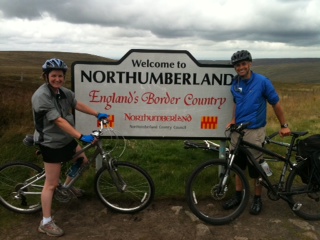June 17th 2014 will see eight Reaseheath Public Service students and staff will cycle 147 miles from the East coast of Cumbria to the West coast of the North sea, raising funds for Help for Hero’s and other local charities.
The students aim to cycle the route in a challenging 3 ½ days. Along the way they will wild camp in the Lake district, camp sites and in Bunk Barns. Individually the students aim to raise £1 for each mile cycled with an expected total of £1,200.
Help for Hero’s
Help for Hero’s mission is to deliver an enduring national network of support for our wounded and their families. We will inspire and enable those who have made sacrifices on our behalf to achieve their full potential.
You can find out more about the work that Help for Hero’s do on their website.
About the C2C route
The Sea to Sea (C2C) cycle route was developed by Sustrans in partnership with various Local Authorities, Groundwork West Cumbria, North Pennines Tourism Partnership, Forest Enterprise and the Lake District National Park amongst others.
The route was opened in 1994 running from Whitehaven on the West coast of Cumbria to the North East coast at Sunderland, and has an average of 12,000 to 15,000 cyclists completing the route every year (and hundreds of thousands of other doing shorter sections). According to Sustrans this is contributing around £12 million a year for the local economy.
The C2C starts in the former coal mining and industrial lands of West Cumbria, travels through the stunning scenery of the northern Lake District and heads into Keswick before passing through Penrith and the Eden Valley, with its lush valleys and sandstone villages. It then starts the climb up to Hartside and onto the unspoilt Northern Pennines – the roof of England. There then follows an undulating ride as the C2C meanders through old lead mining villages, such as Nenthead and Rookhope, and down into the Durham Dales before entering the old steel town of Consett. From here it’s an easy ride through one of Britain’s old industrial heartlands to the North Sea and Sunderland.
The route is made up of approximately:
Main Roads – mainly short sections through urban areas – 4%
Minor Roads – quiet, country roads – 50%
Cyclepaths/Off Road – disused railway lines etc – 46%
The route is best ridden from West to East to take advantage of the prevailing winds from the West as well as having the gradients in your favour, i.e. short uphills and long downhills! Tradition dictates that you start the ride by dipping your back wheel in the Irish Sea and only ends when your front wheel gets a dip in the North Sea at the finish.
For more information on the Sea to Sea cycle route visit: www.c2c-guide.co.uk

